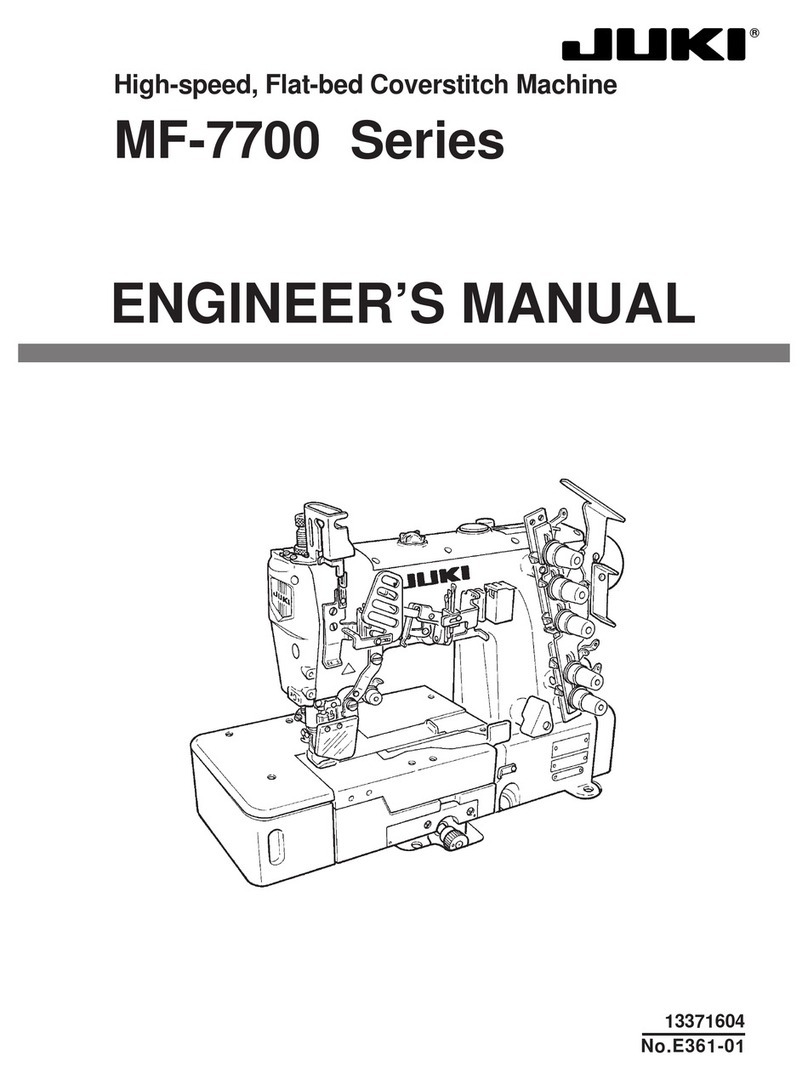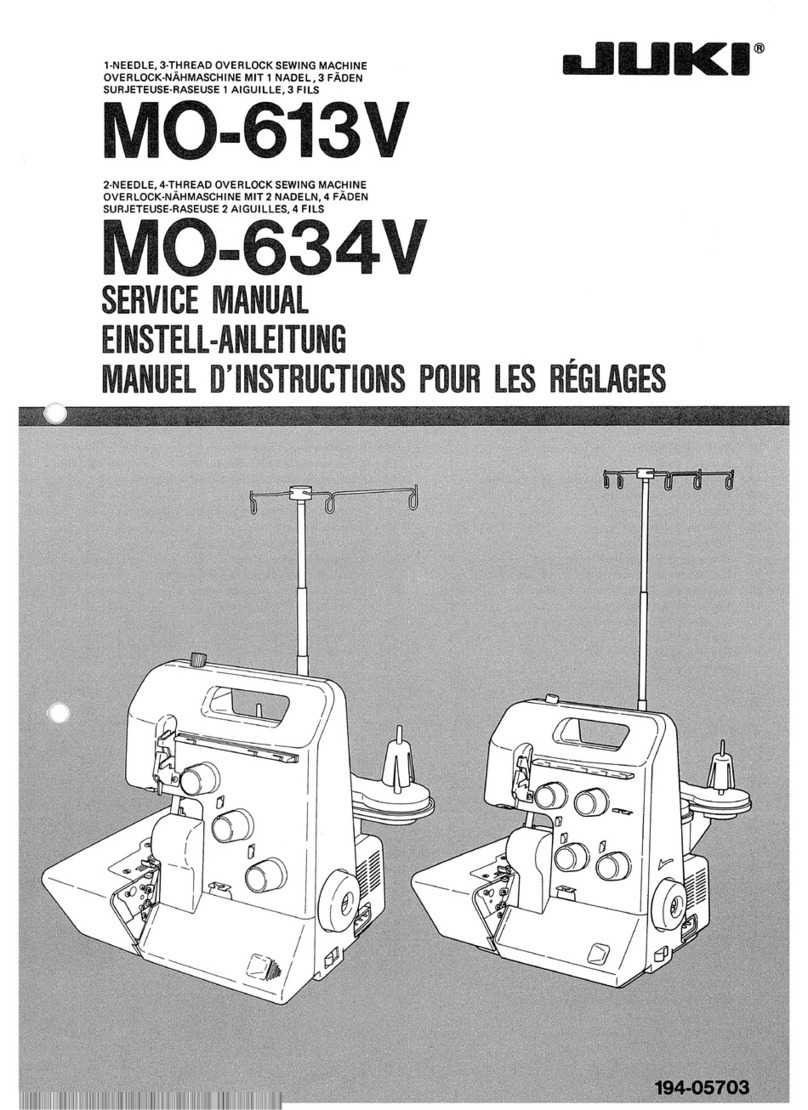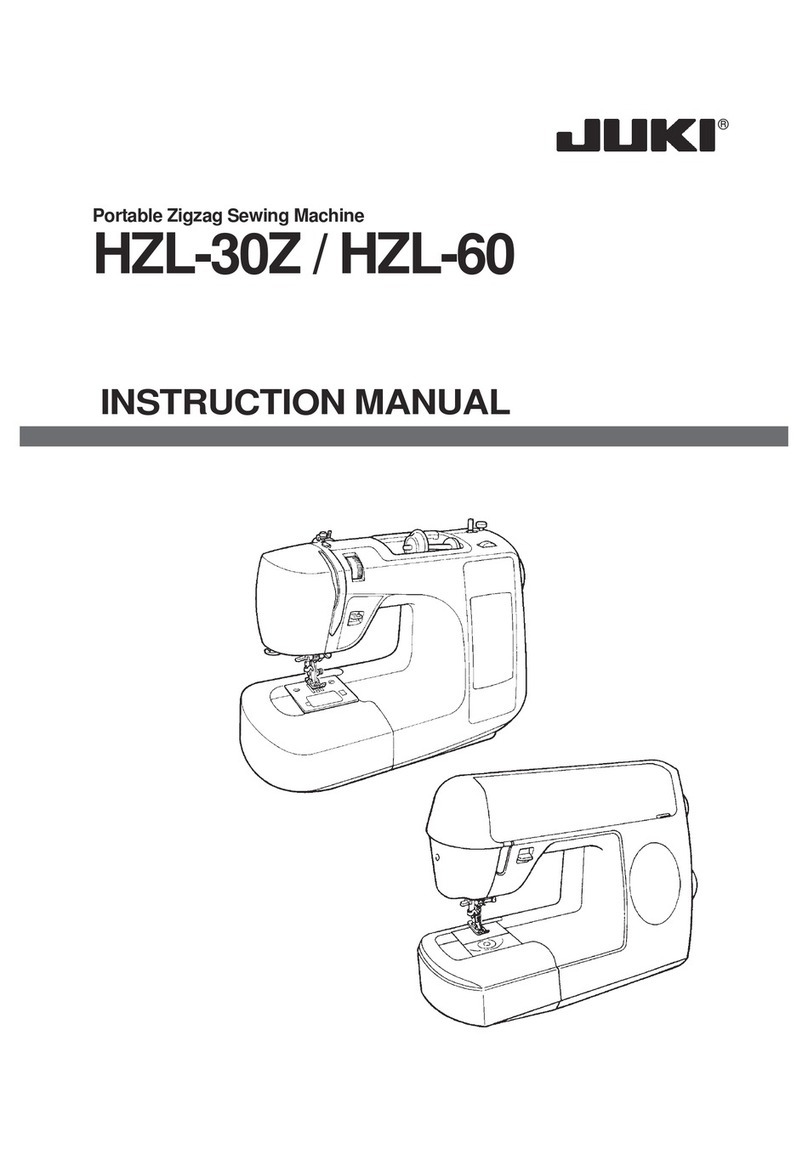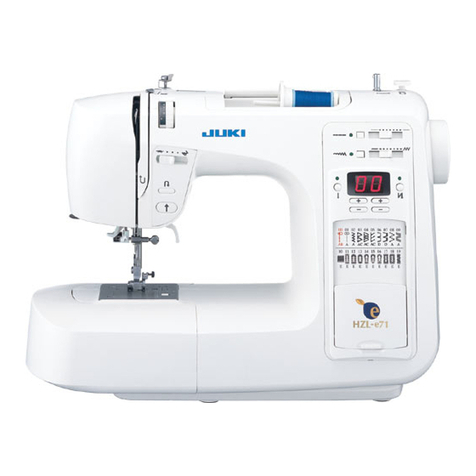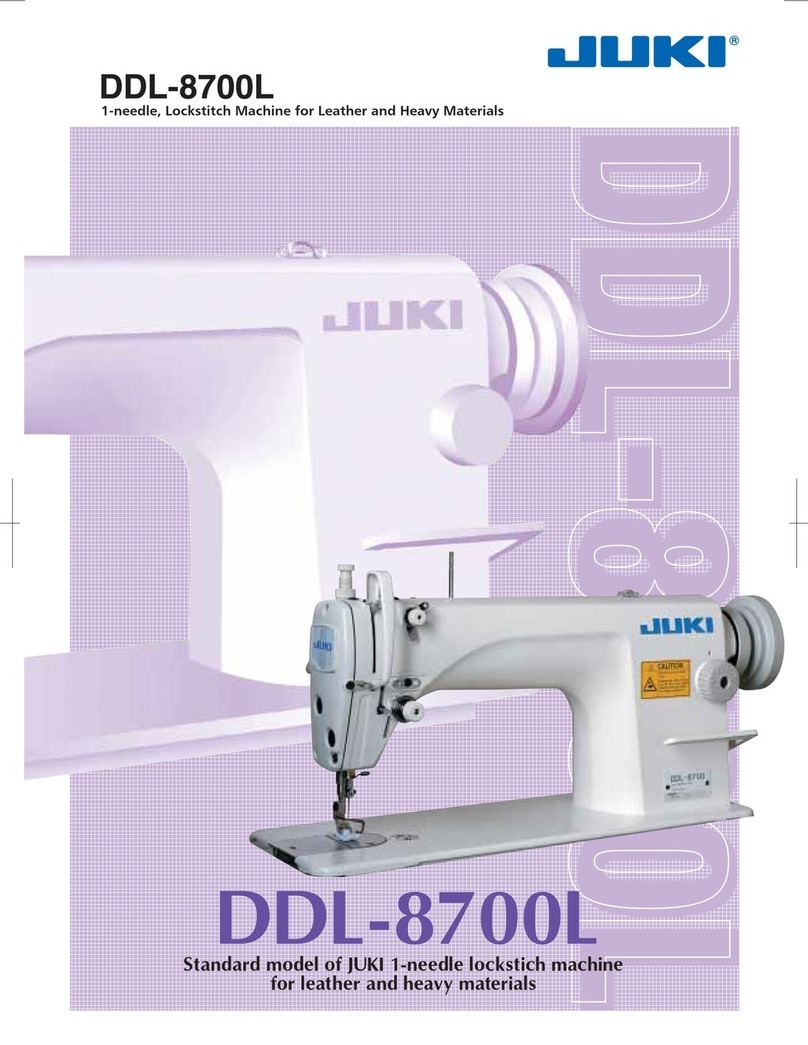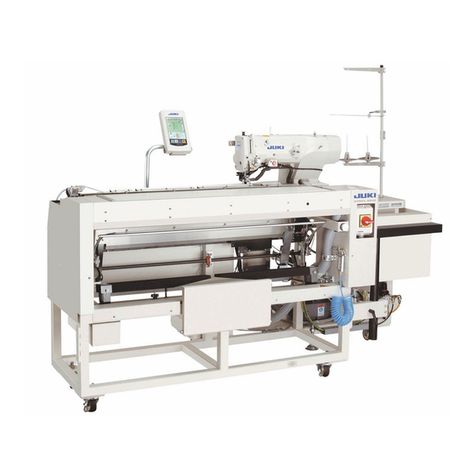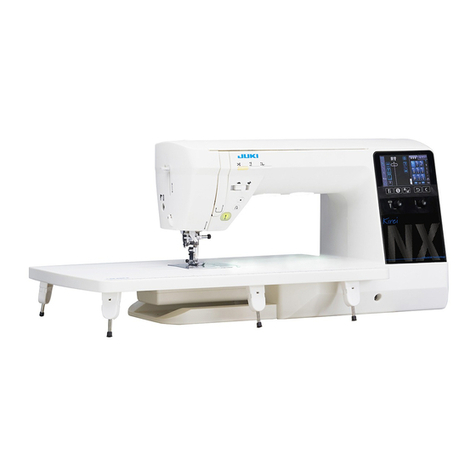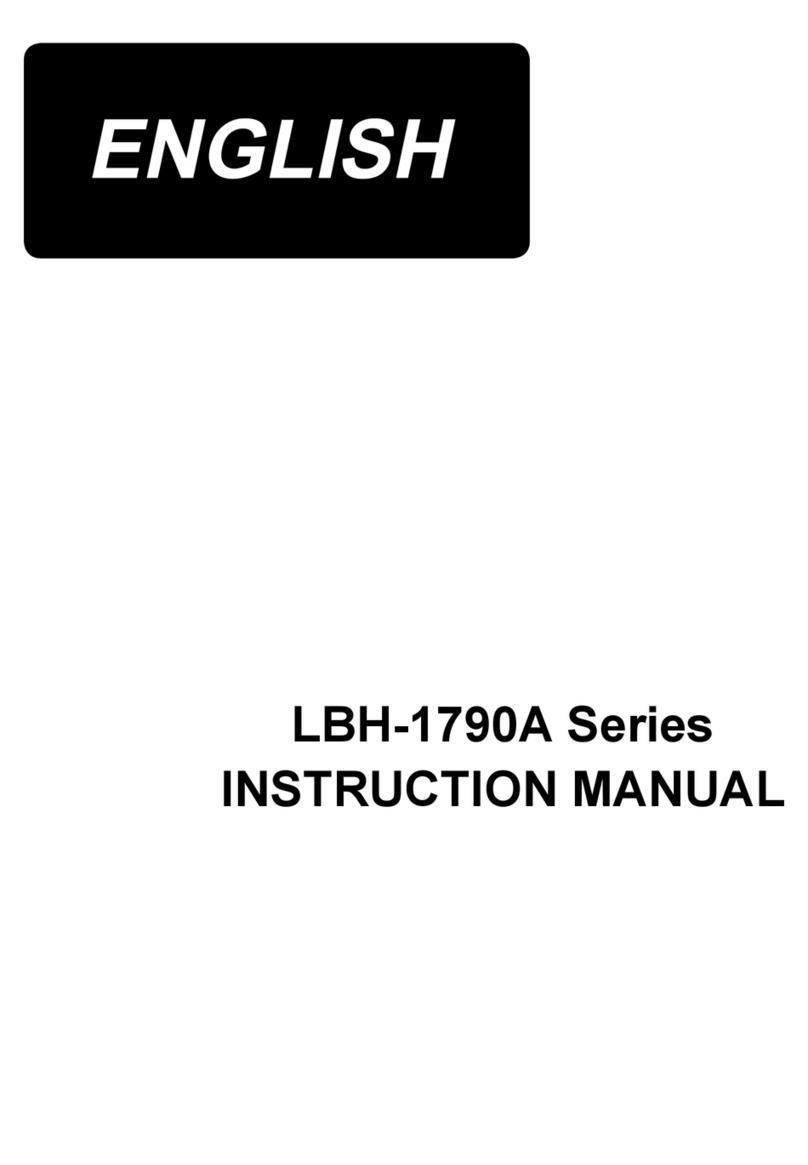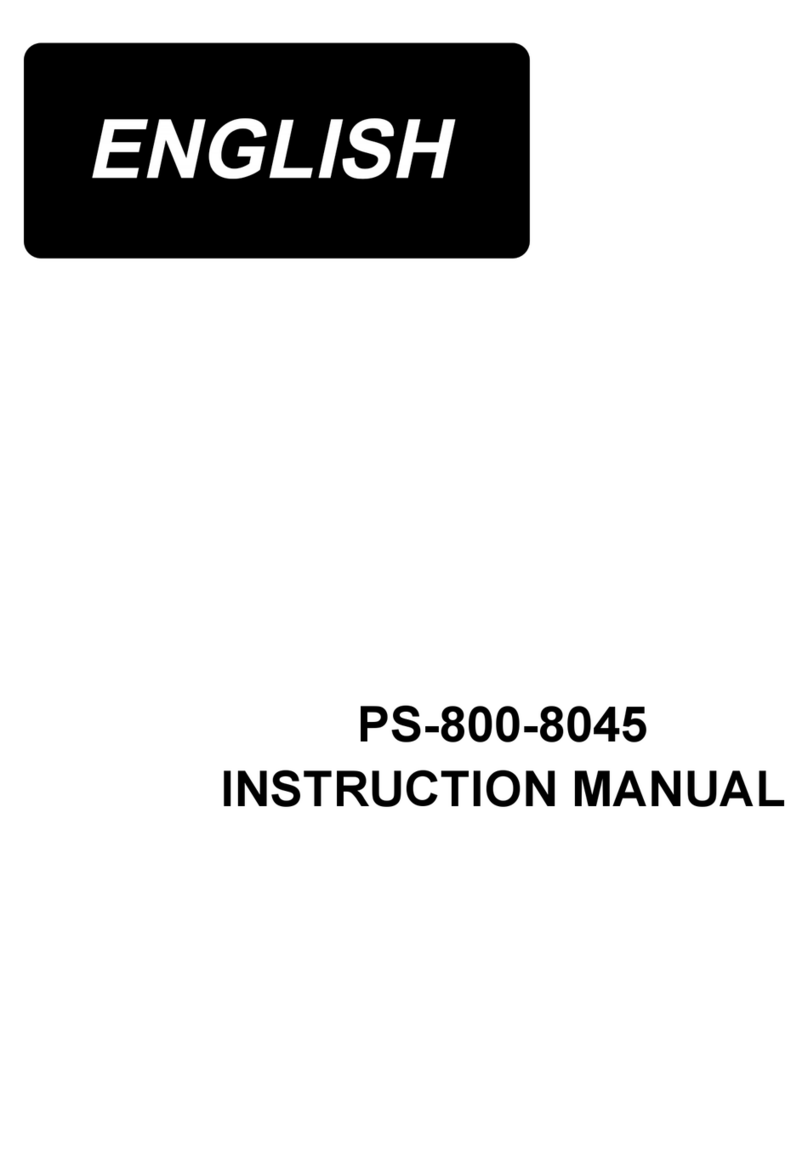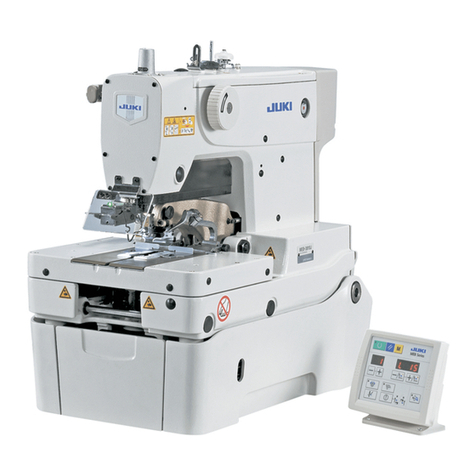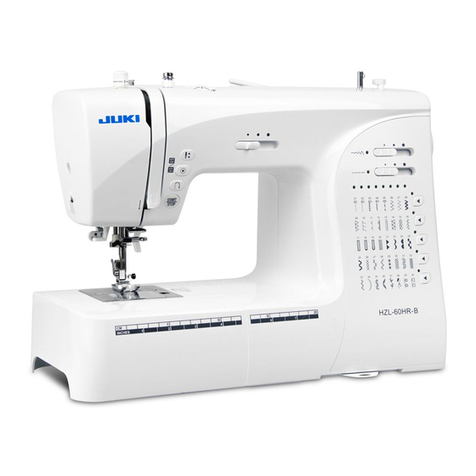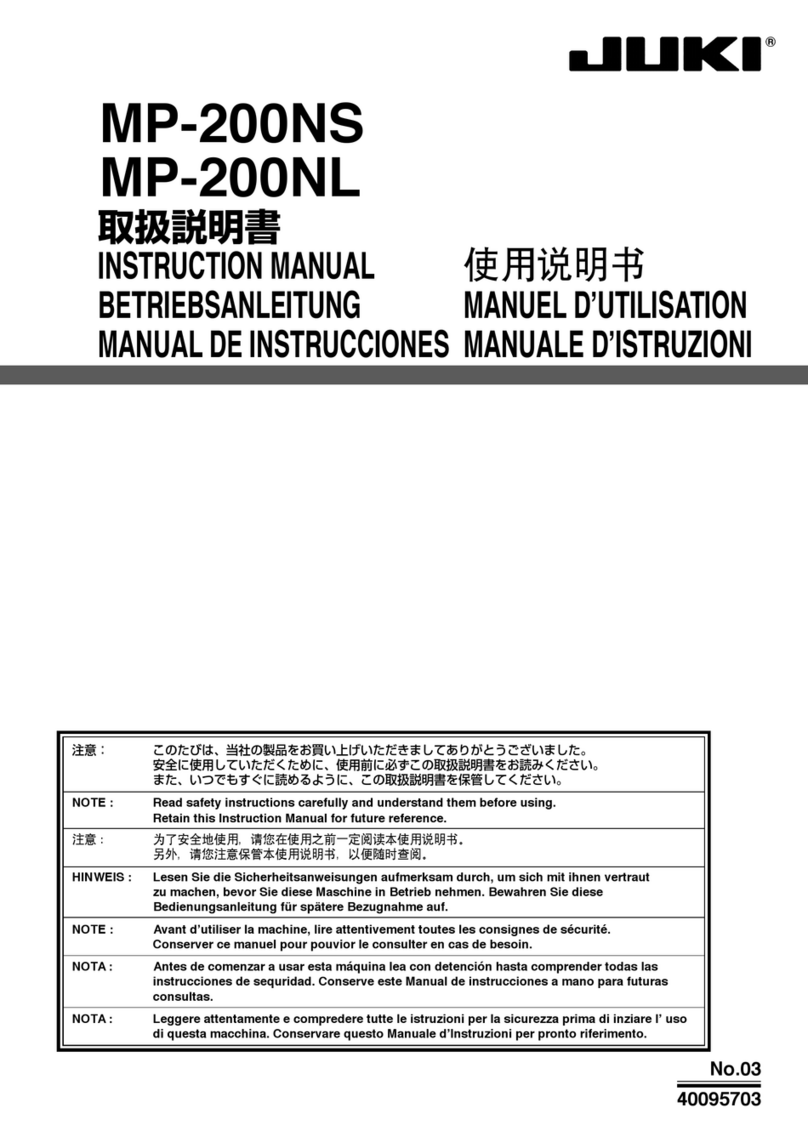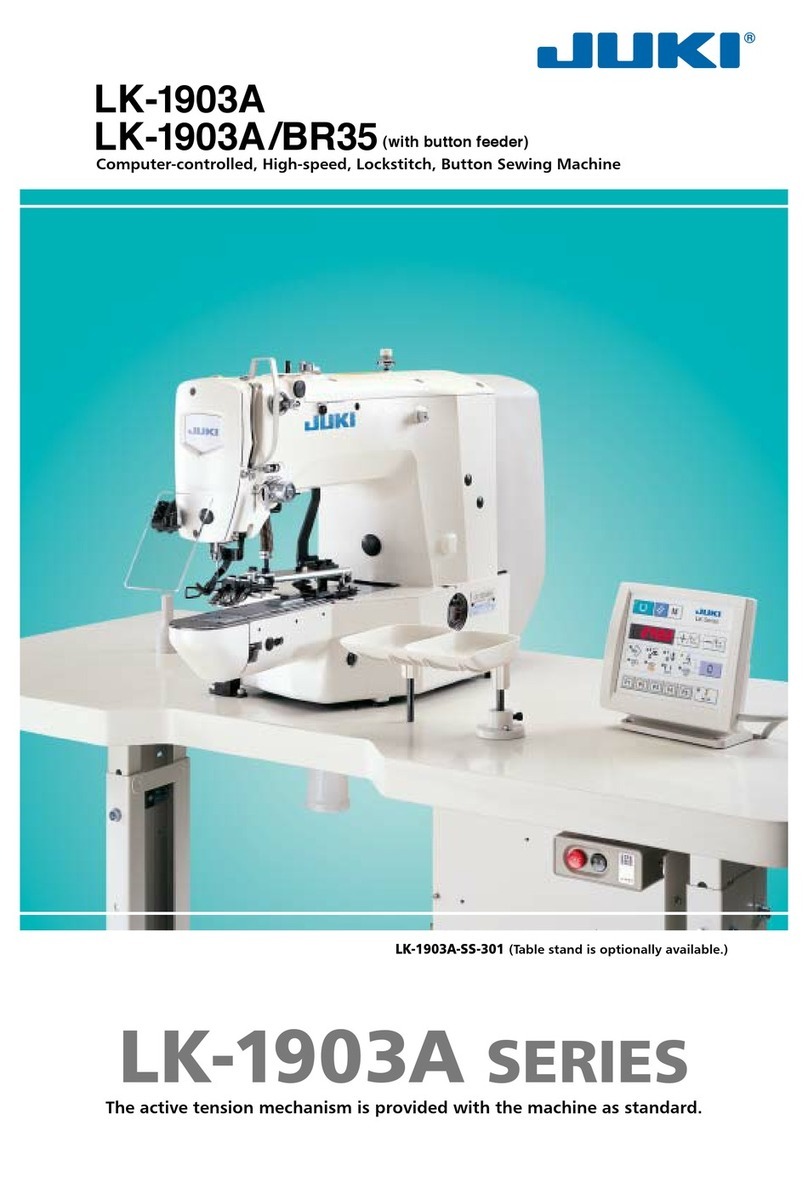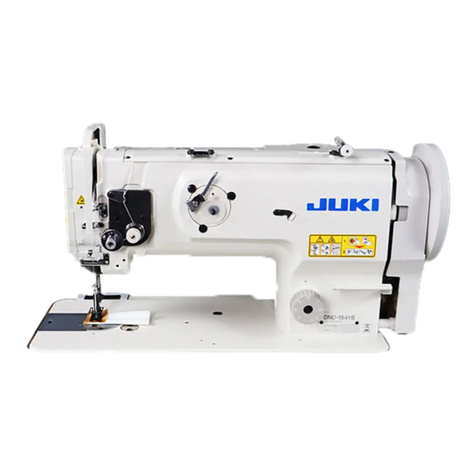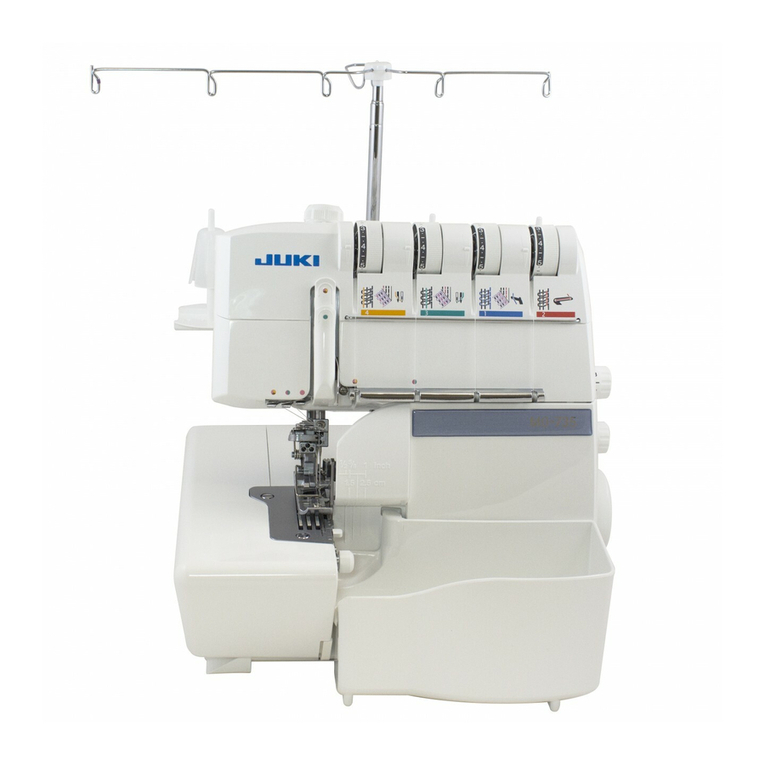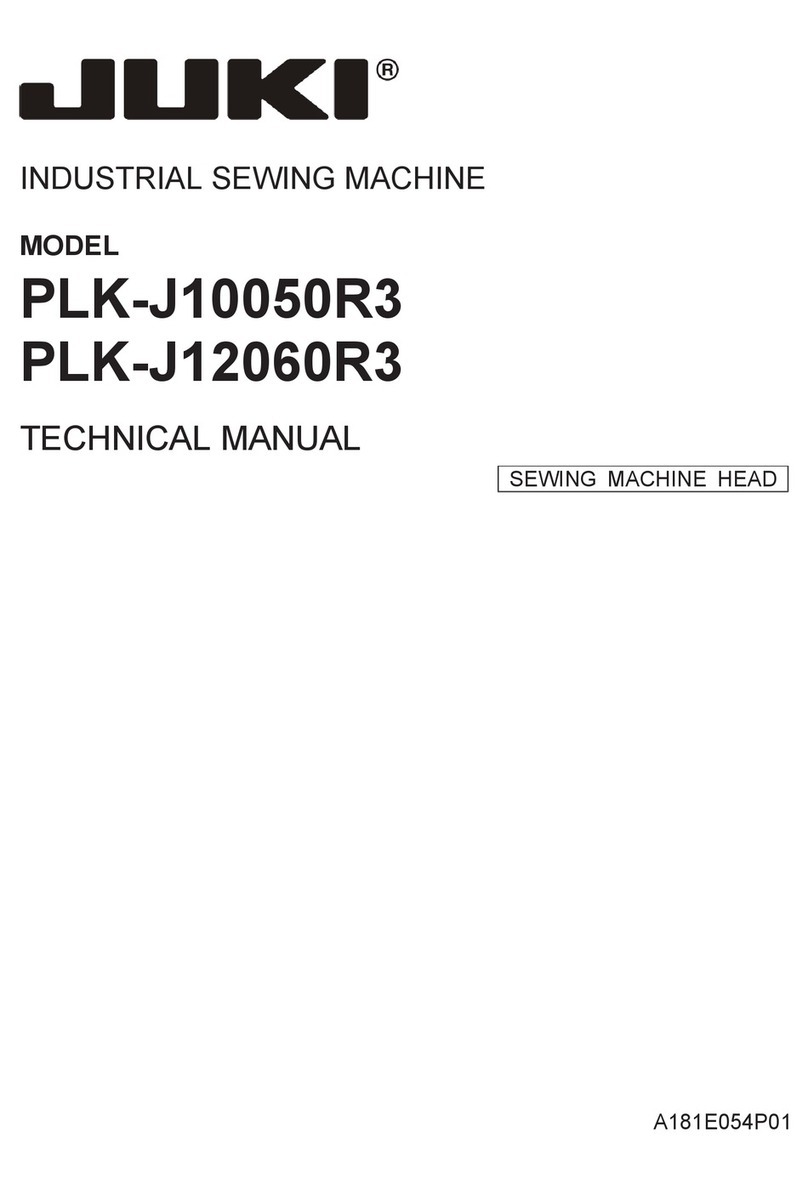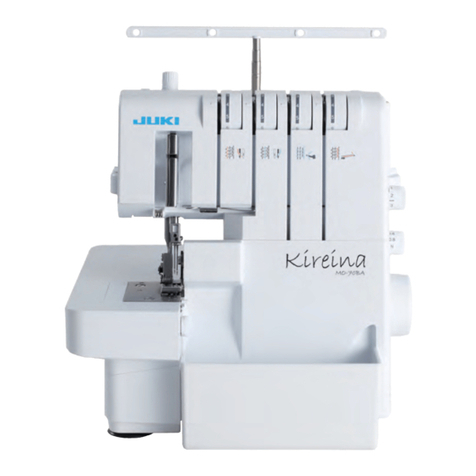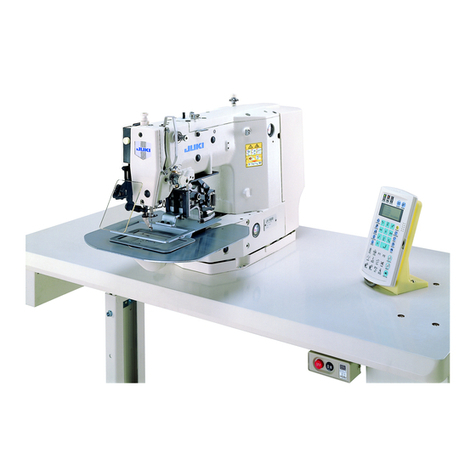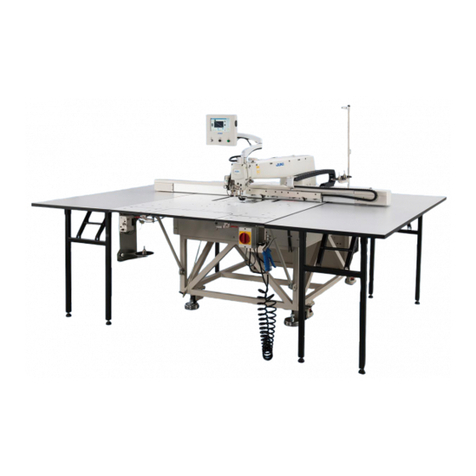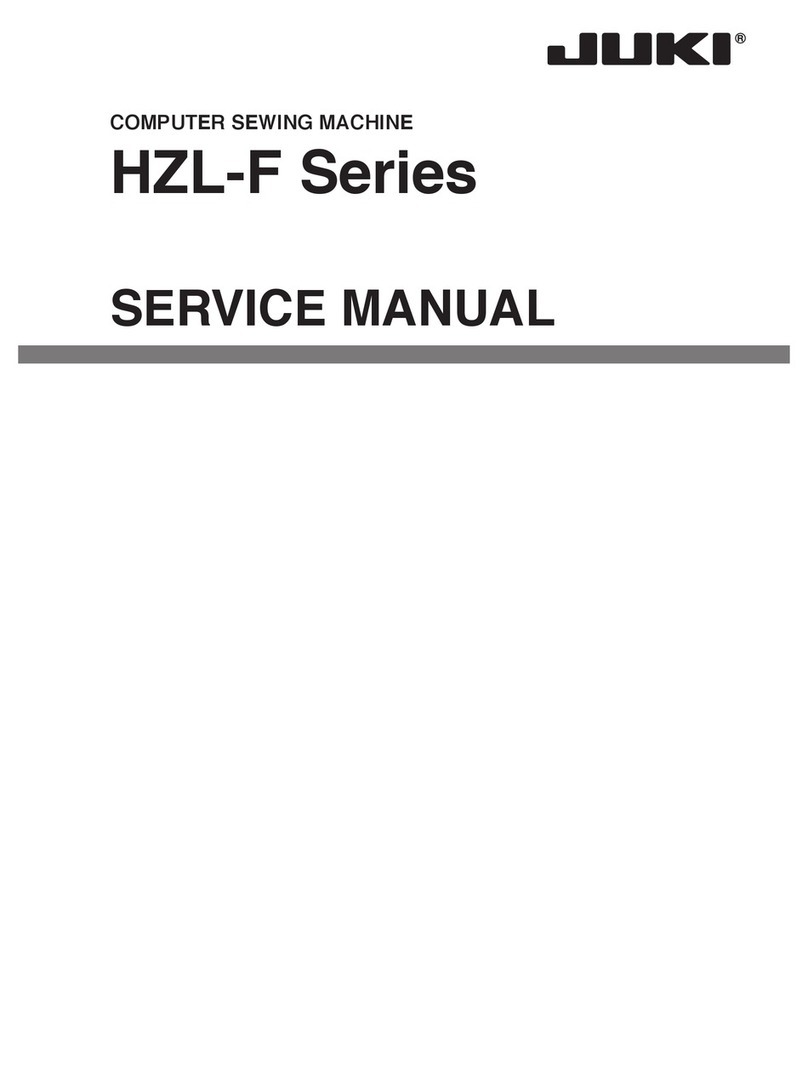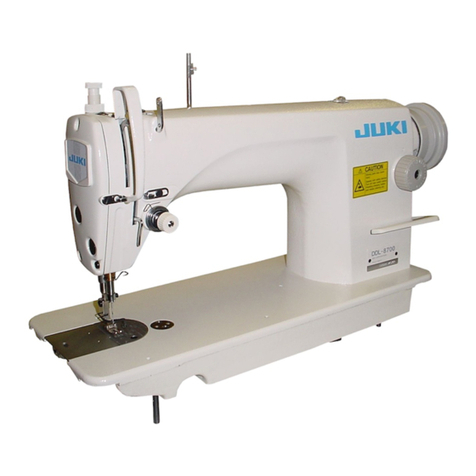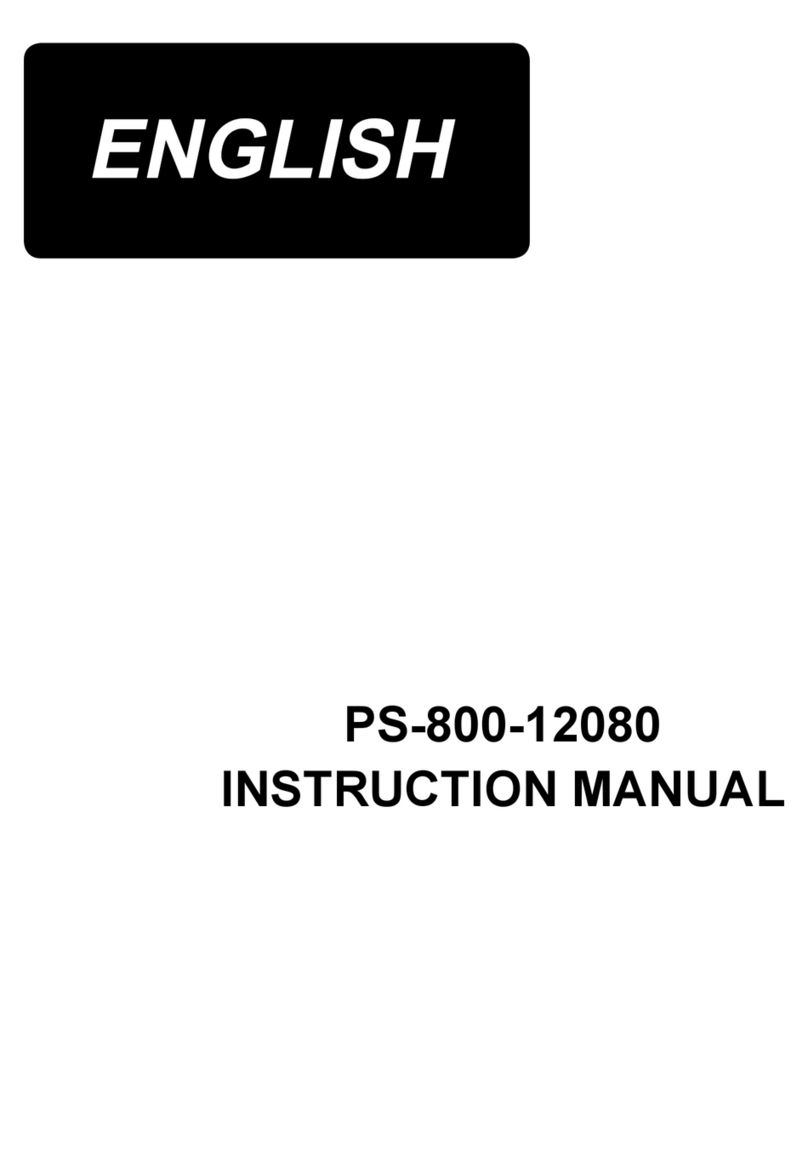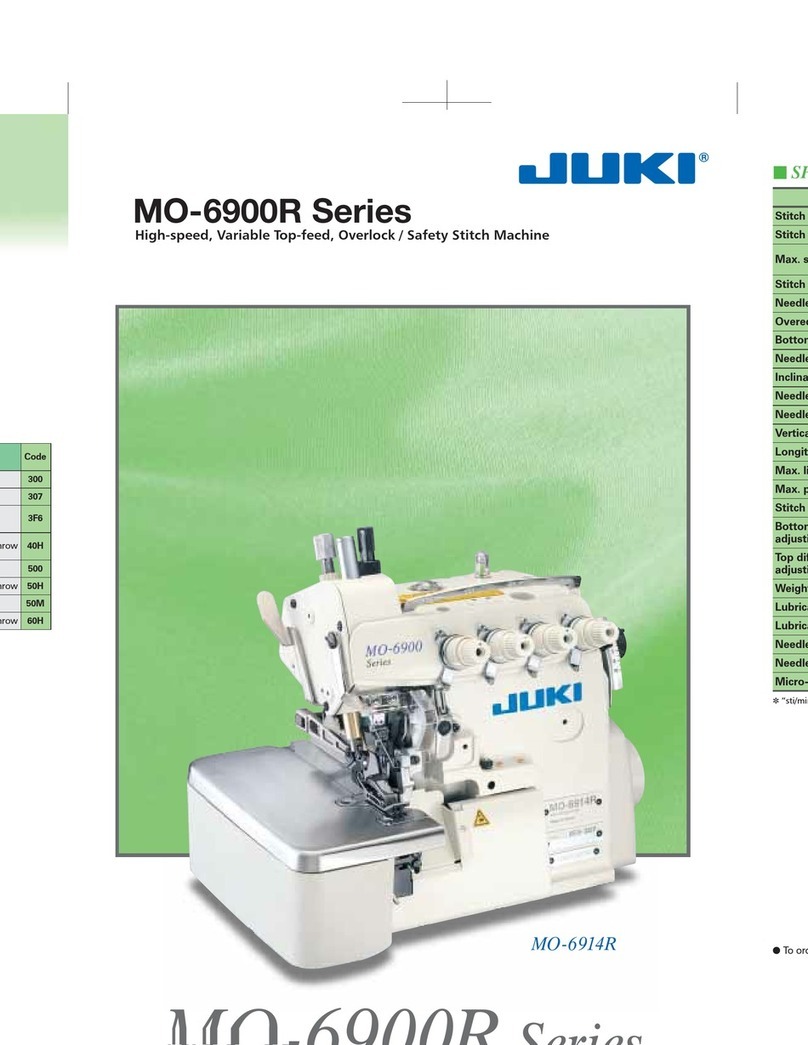
i
CONTENTS
!. SPECIFICATIONS ..........................................................................................................1
@. AT THE BEGINNING......................................................................................................1
#. INSTALLING THE ACCESSORIES ...............................................................................2
1. Installing the presser lifting cylinder ............................................................................................ 2
2. Installing the air regulator .............................................................................................................. 2
3. Installation and setting SC-921...................................................................................................... 3
(1) Installing the SC-921 on the table ( Table-mount type ) ............................................................................3
(2) Installing the SC-921 on the table ( Semi-submerged type ) ....................................................................3
(3) Connecting the cords...................................................................................................................................4
(4) Setting procedure of the machine head .....................................................................................................5
(5) Setting the lower stop position of the needle bar .....................................................................................6
$. AIR PIPING DRAWING ..................................................................................................7
1. Piping of the thread trimmer device (UT57).................................................................................. 7
2. Piping of the thread trimmer device (UT55).................................................................................. 8
3. Piping drawing for air blow (UT56)................................................................................................ 9
4. Adjusting the air regulator ............................................................................................................. 9
%. THREADING THE MACHINE HEAD ...........................................................................10
^. ADJUSTING THE LOOPER THREAD TRIMMER MECHANISM................................11
1. Adjusting the thread trimmer air cylinder....................................................................................11
2. Adjusting the Lower knife ............................................................................................................ 12
3. Adjusting the position of clamp pressure adjusting spring ..................................................... 12
4. Adjusting the knife engagement and the knife pressure adjusting spring ............................. 12
5. Adjusting the pressure of clamp spring ..................................................................................... 12
6. Initial position of the looper thread trimmer mechanism.......................................................... 13
7. Adjusting the stopper ................................................................................................................... 13
8. Adjusting the height of the lower knife....................................................................................... 13
9. Adjusting the lower knife holder guide....................................................................................... 13
10. Adjusting the longitudinal position of the blade point of lower knife...................................... 14
11. Adjusting the thread trimmer sensor.......................................................................................... 14
12. Adjusting the speed of looper thread trimmer ........................................................................... 14
&. ADJUSTING THE THREAD RELEASE MECHANISM................................................15
1. Adjusting the disk-rise ................................................................................................................. 15
2. Adjusting the thread release hook .............................................................................................. 15
*. ADJUSTING THE TOP COVERING THREAD TRIMMER MECHANISM....................16
1. Adjusting the engagement of knives .......................................................................................... 16
2. Adjusting the pressure of clamp spring ..................................................................................... 16
3. Adjusting the position of the blade point of moving knife........................................................ 16
4. Adjusting the speed of moving knife .......................................................................................... 17
(. ADJUSTING THE AIR-BLOW WIPER (UT56).............................................................18
1. Installing the air-blow wiper......................................................................................................... 18
2. Adjusting the air-blow wiper ........................................................................................................ 18
). ADJUSTING THE NEEDLE THREAD WIPER (UT55) ................................................19
1. Adjusting the clamp spring.......................................................................................................... 19
2. Installing the needle thread wiper ............................................................................................... 19
_. MAINTENANCE ...........................................................................................................20
1. Cleaning the motor fan ................................................................................................................. 20
